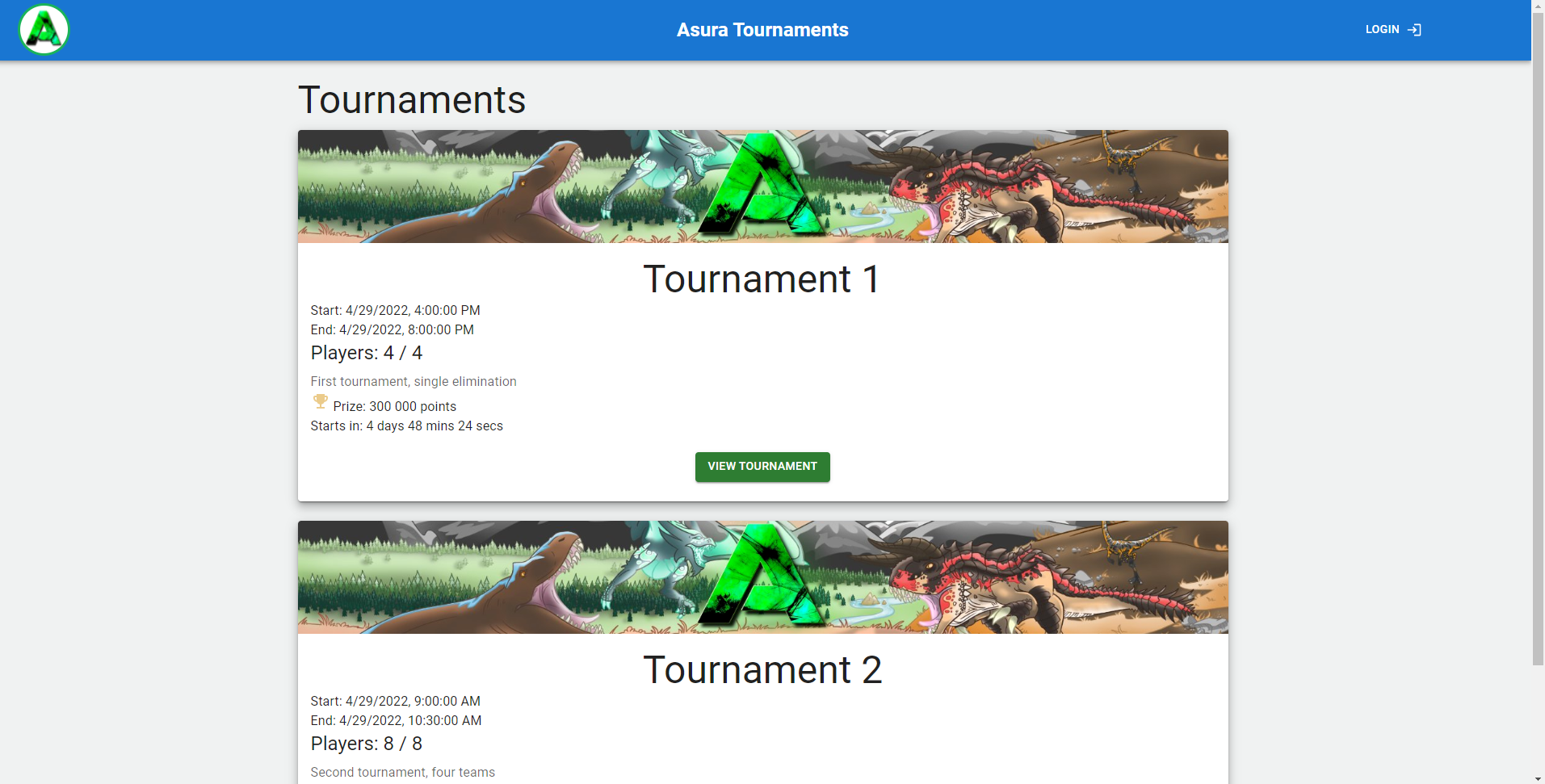dcst1008-v22-gruppe1
Asura Tournament Manager
Usage
To make use of the Asura Tournament Manager, you need to have a running instance of the Asura Server. The recommended way to access the application is to use our instance on https://asura.feal.no. If you want run a separate instance of the server, the installation process is described below.
A complete user manual describing the application features and how to use them can be found in the User Manual.
Users and Managers
Any visitor of the website is able to view current and future tournaments, but only administrators can create and edit tournaments. Managers can access the menu labeled "Admins" and invite new administrators. Once you are registered, the login process is as simple as pressing "Log in" and clicking your google account.
Inner workings and explanatory diagrams
The entire product and development process is described in our wiki in the sidebar. You will find diagrams documents describing the inner workings of the application.
Installation
The installation process is described in detail on our wiki page: Full installation guide
In short, you will need
- A MySQL database server
- A suitable server computer
- A google API key
- Basic knowledge of the command line
This is not an in-depth guide, but rather a quick start reference to be used alongside the installation guide.
- Establish a server with NGINX
- Configure domains / subdomains as needed
- Enable SSL
- Use a local proxy to allow https to an internal port of your choice (default is 3000)
- Clone this repository
- Configure environment variable files for both server and client
cp dotenv-template .env- Variable names should be self explanatory, and describe
- Database connections: URL, username, password, database name
- Application URLs
- Google API keys
- Cookie setttings
- Install dependencies for both server and client
npm install
- Build the client
npm run build
- Start the server
npm start
